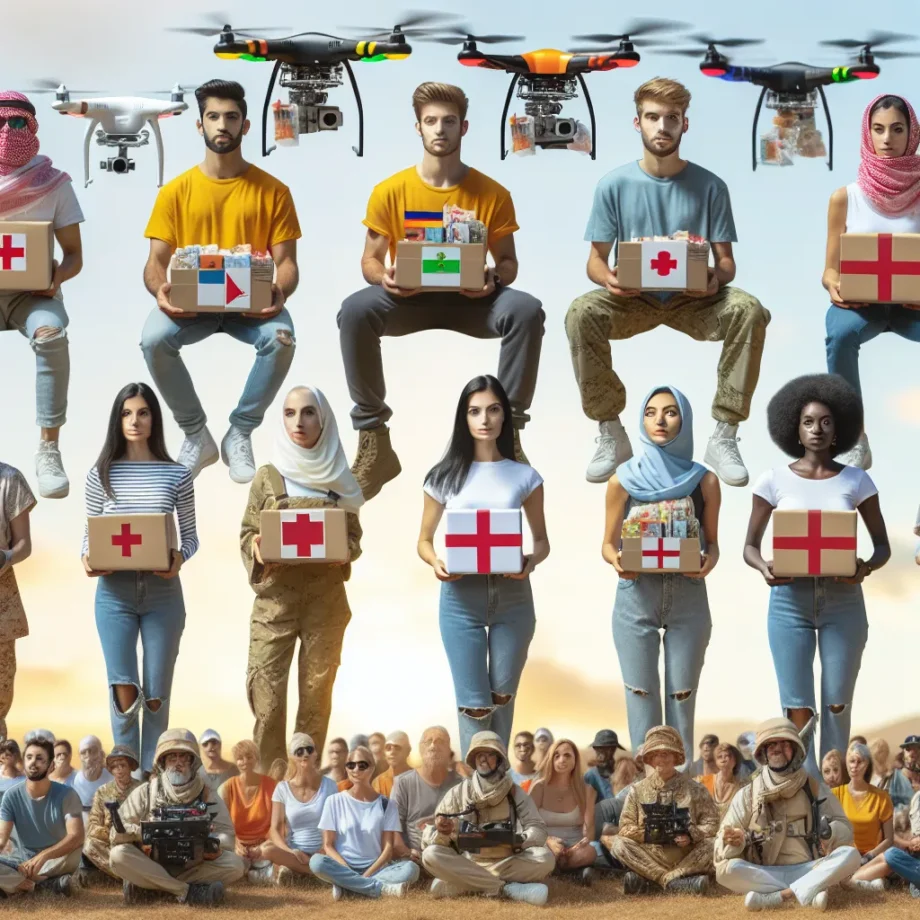The Struggle of Delivering Aid to Remote Areas: A Complex Challenge
Delivering aid to remote areas poses a complex challenge that humanitarian organizations continue to grapple with. The logistical hurdles of reaching isolated communities in need often result in delayed or inadequate aid distribution, exacerbating the already dire circumstances. In regions with poor infrastructure and limited access, such as mountainous terrain or dense forests, the transport of essential supplies becomes arduous and sometimes unattainable. Additionally, adverse weather conditions further impede efforts to deliver aid, making it a daunting task for relief workers.
Despite these challenges, advancements in technology and innovation offer opportunities to improve aid distribution to remote areas. Drones, for example, have shown promise in delivering medical supplies and other crucial items to difficult-to-reach locations. Moreover, mobile apps and data analytics are being utilized to map out the most efficient routes for aid delivery, optimizing resource allocation and minimizing delays. By harnessing these technological solutions, aid organizations can enhance their ability to navigate the complexities of delivering aid to remote areas, ultimately saving more lives.
In conclusion, the struggle of delivering aid to remote areas is undeniably complex, but it is not insurmountable. With the ongoing development of innovative approaches and the unwavering dedication of humanitarian workers, there is potential to overcome these challenges and ensure that aid reaches even the most isolated communities in need.
Transforming Aid Distribution: Innovative Solutions and Potential Impact
Transforming aid distribution presents both challenges and opportunities for humanitarian organizations and the communities they serve. Innovative solutions have the potential to revolutionize the way aid is distributed, leading to more efficient and effective assistance for those in need.
One of the main challenges in aid distribution is the logistics of reaching remote or disaster-stricken areas. However, the advancement of technology, such as drones and blockchain, has opened up new possibilities for reaching these inaccessible areas. Drones can deliver aid packages to otherwise unreachable locations, while blockchain technology can ensure transparent and secure transactions, reducing the risk of corruption and ensuring aid reaches its intended recipients.
Furthermore, the use of data analytics and predictive modeling allows aid organizations to anticipate and prepare for potential crises, enabling them to mobilize resources more effectively. By leveraging big data, organizations can gain valuable insights into the needs of affected populations and tailor their response accordingly.
In addition to technological innovations, partnerships with local communities and organizations play a crucial role in transforming aid distribution. By empowering local leaders and leveraging their knowledge of the community, aid organizations can ensure that their interventions are culturally sensitive and appropriate. This approach not only improves the impact of aid but also promotes sustainability and resilience within the community.
In conclusion, while the challenges of transforming aid distribution are significant, the opportunities presented by innovative solutions are equally vast. Embracing technological advancements, data-driven insights, and community partnerships can lead to a more efficient and impactful distribution of aid, ultimately improving the lives of those in need.
Collaboration and Technology: Facilitating Aid Distribution in Crisis Situations
Collaboration and technology play a crucial role in facilitating aid distribution in crisis situations. In recent years, the humanitarian aid sector has increasingly turned to collaborative approaches and innovative technologies to overcome the challenges of reaching affected populations in remote or hazardous areas. The use of collaboration and technology presents both challenges and opportunities in aid distribution, reshaping traditional methods and improving the efficiency and effectiveness of humanitarian response.
One of the key challenges in aid distribution is ensuring coordination among various aid organizations, government agencies, and local authorities. Collaboration platforms and networks have emerged as a vital tool for facilitating information sharing, resource allocation, and logistical planning. These platforms enable different stakeholders to coordinate their efforts, share real-time data, and avoid duplication of resources, ultimately leading to more streamlined and targeted aid distribution.
Technology also plays a pivotal role in overcoming logistical barriers in aid distribution. For example, the use of geographic information systems (GIS) and remote sensing technology allows aid organizations to better assess the needs of affected areas, identify access routes, and plan for the efficient delivery of supplies. Moreover, advanced communication and mapping technologies enhance the overall transparency and accountability of aid distribution processes, enabling donors and beneficiaries to track the movement of resources and monitor their effective utilization.
Furthermore, the growing prevalence of mobile technology has revolutionized the way aid is distributed in crisis situations. Mobile payment solutions, for instance, enable cash transfers to affected populations, empowering individuals to make choices based on their specific needs and priorities. Mobile communication also facilitates direct engagement with affected communities, allowing aid organizations to gather real-time feedback and adjust their strategies accordingly.
While collaboration and technology offer significant opportunities to improve aid distribution, it is essential to address the digital divide and ensure that marginalized communities have access to these benefits. Additionally, data security and privacy concerns must be carefully managed to protect sensitive information and uphold ethical standards in aid operations.
In conclusion, collaboration and technology are reshaping the landscape of aid distribution in crisis situations. By fostering greater collaboration among stakeholders and harnessing the power of innovative technologies, humanitarian organizations can enhance the efficiency, transparency, and impact of their relief efforts, ultimately improving the lives of those affected by crises.
